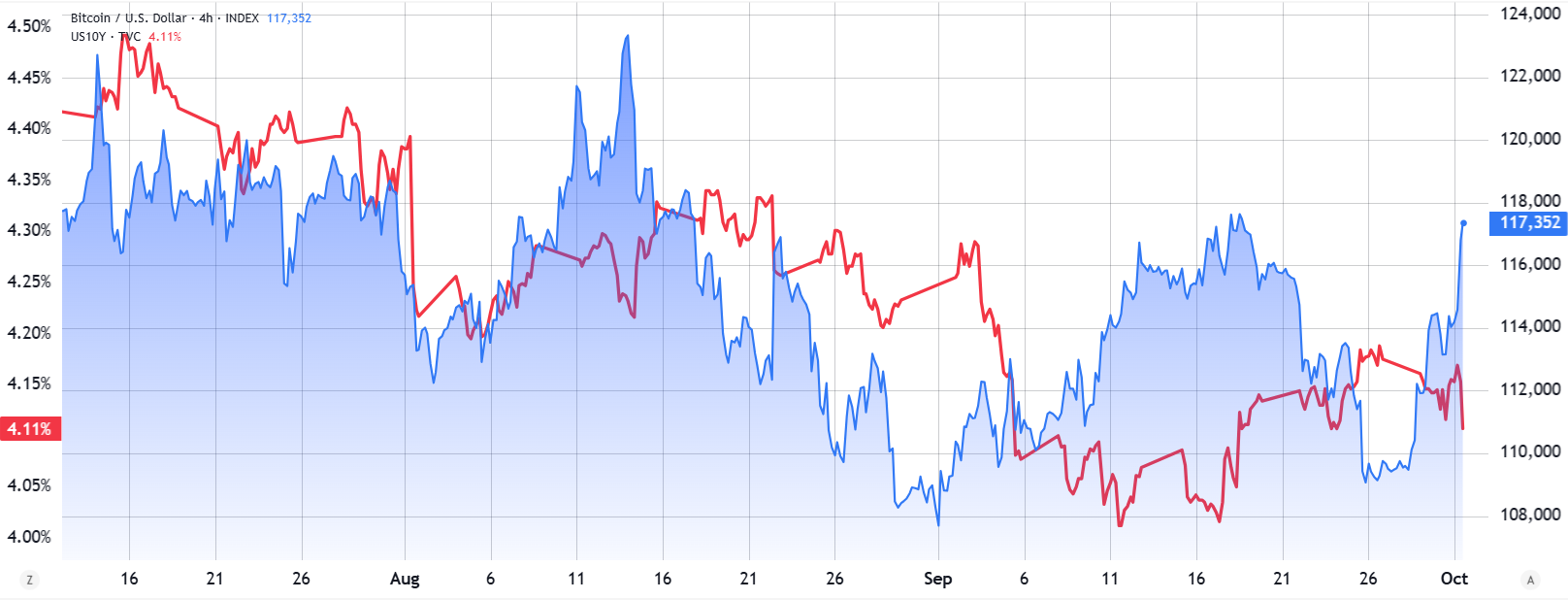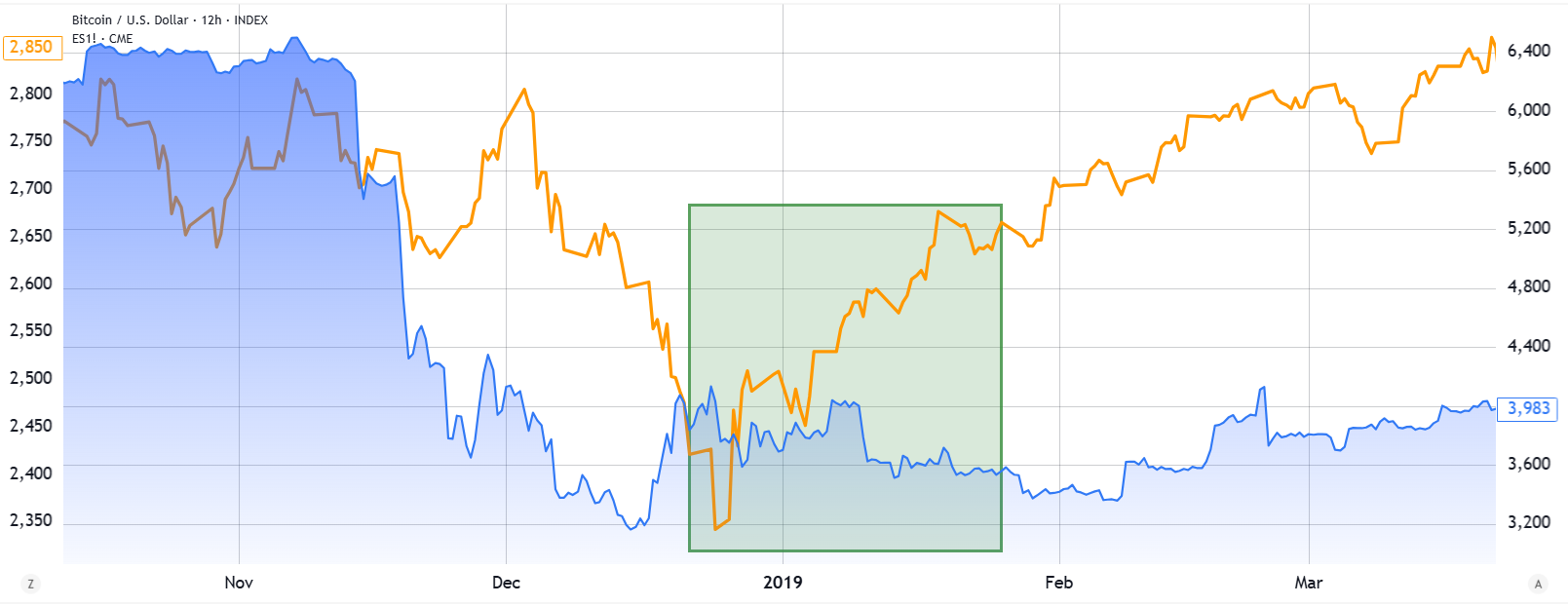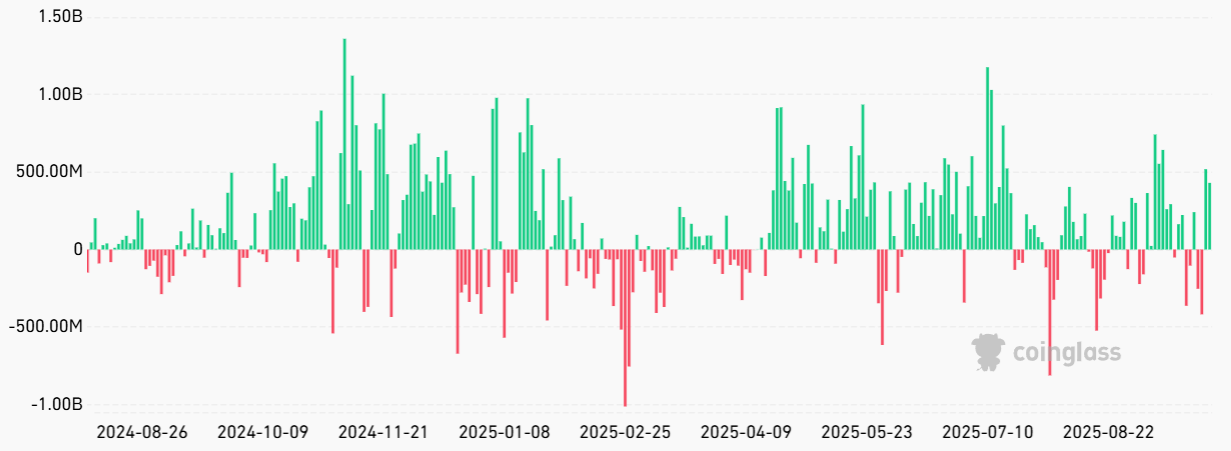Bitcoin Hits $118K After US Gov Shutdown: What’s Next?
Key takeaways:
-
Yields on US 10-year Treasurys declined, highlighting growing risk aversion and demand for safe-haven assets.
-
Spot Bitcoin ETFs faced $430 million inflows while equities stayed muted, signaling potential decoupling from traditional markets.
Bitcoin (BTC) reached a two-week high on Wednesday following the United States federal government shutdown. However, investors remain cautious, recalling that the 2018 shutdown triggered a sell-off amid concerns about slower economic growth.
With no resolution in place, federal agencies were ordered to activate contingency measures, forcing hundreds of thousands of employees to stay home. Attention now turns to the length of the shutdown, with another Senate vote scheduled for Wednesday.
The Trump administration has warned it may pursue mass layoffs if no agreement is reached, a threat that has made traders more cautious and risk-averse.

Yields on the US 10-year Treasury fell on Wednesday, showing that traders are willing to accept lower returns in exchange for the safety of government-backed debt. Gold also surged to a record $3,895 per ounce, signaling stronger demand for traditional hedges.
At first glance, the shutdown appeared to provide a short-term boost for Bitcoin, but questions remain about its durability. The US stock market showed little immediate reaction, though pressure came from ADP data pointing to 32,000 fewer private payrolls in September, while August figures were revised to show a net loss of 3,000 jobs.
Bitcoin lost 9% during the 2018 US government shutdown
When the US government shut down in December 2018, Bitcoin dropped by 9%. This time, the economic drag could surface quickly as government spending slows sharply and the release of official data faces delays.

The US stock market began a 12% correction just 10 days before the government shutdown on Dec. 22, 2018, but the full decline was reversed in less than a month. Investors who held their positions and looked past the short-term volatility ultimately came out ahead.
For Bitcoin, however, the December 2018 shutdown had a slightly negative impact, with prices falling from $3,900 to $3,550 during the 35-day standoff. Still, the cryptocurrency faced larger challenges at the time, having already dropped 42% in the two weeks leading up to Nov. 25, 2018. Some analysts argued that stricter regulatory measures were the trigger for the sharp sell-off.
In October 2018, the Financial Action Task Force (FATF) updated its guidelines to cover virtual asset activity, including cryptocurrency exchanges and certain wallet providers. The intergovernmental body, which represents about 200 jurisdictions, centers its mandate on Anti-Money Laundering and counter-terrorism financing. Traders may have anticipated heightened regulatory scrutiny.
Related: US Senate to hold hearing on crypto taxes as IRS offers relief on corporate tax

The $430 million in net inflows into spot Bitcoin ETFs on Tuesday, combined with the asset’s recent decoupling from equities, has reinforced its reputation as an independent hedge. These vehicles now manage nearly $147 billion in assets, while gold, a $26 trillion market, supports $461 billion through ETFs.
Current conditions suggest the government shutdown could prove favorable for Bitcoin over the next 30 days, even as short-term economic weakness pressures traditional markets. Sustained corporate demand for Bitcoin as a reserve asset is also set to play an important role in supporting bullish momentum during a period of heightened uncertainty.
This article is for general information purposes and is not intended to be and should not be taken as legal or investment advice. The views, thoughts, and opinions expressed here are the author’s alone and do not necessarily reflect or represent the views and opinions of Cointelegraph.


